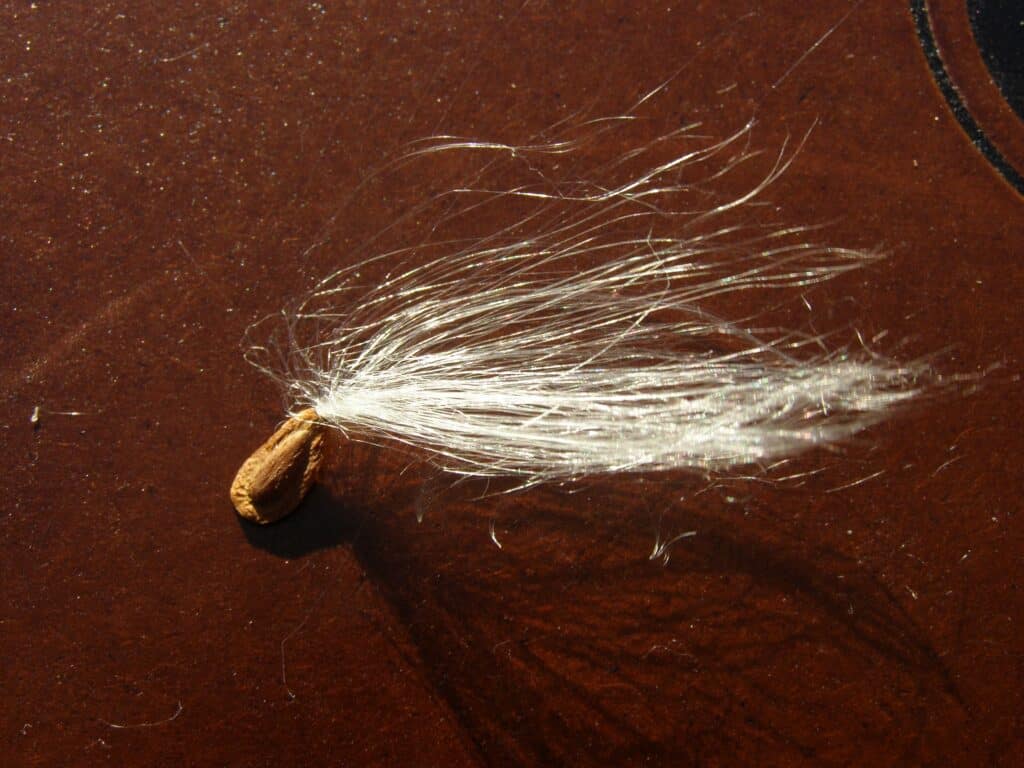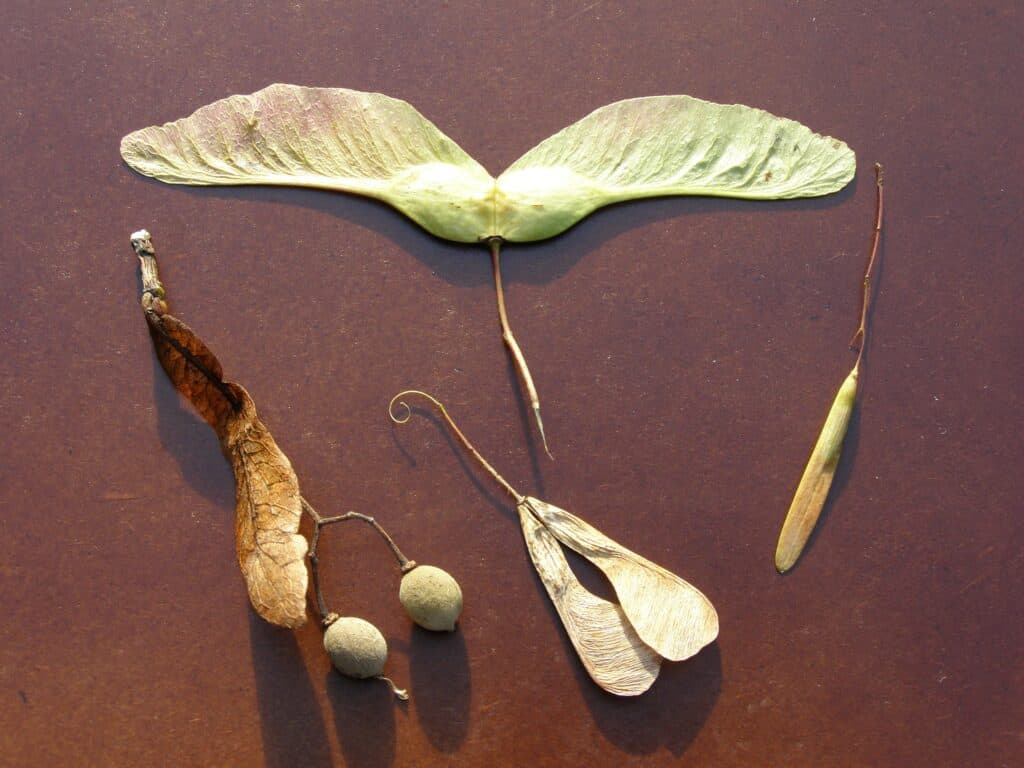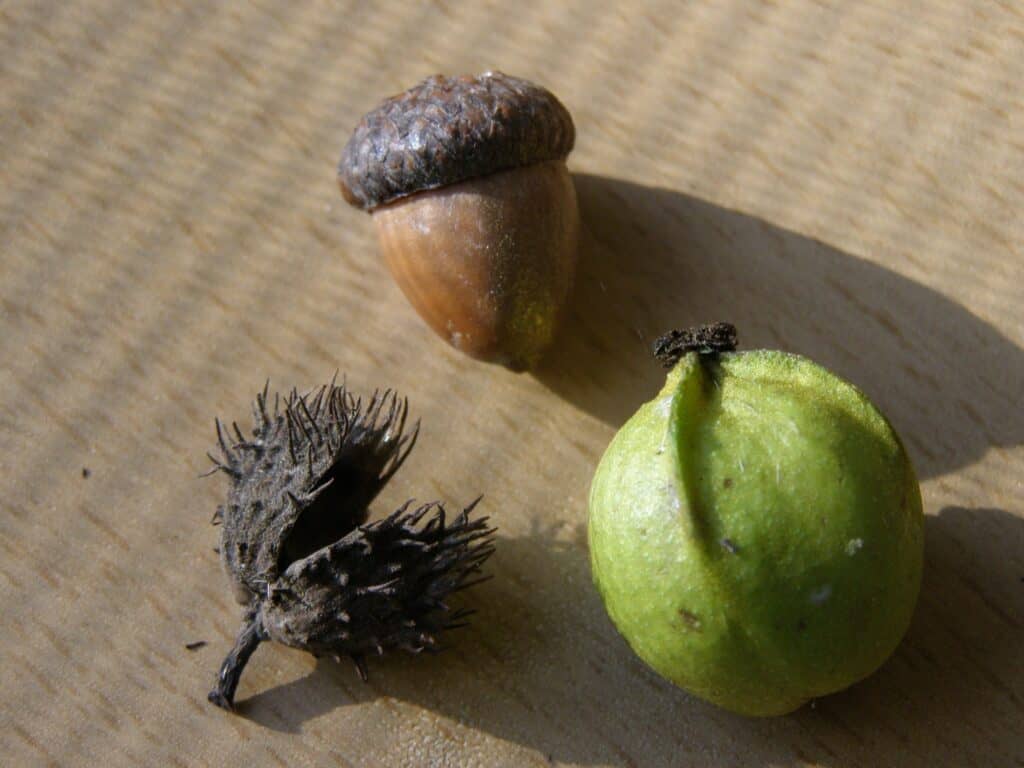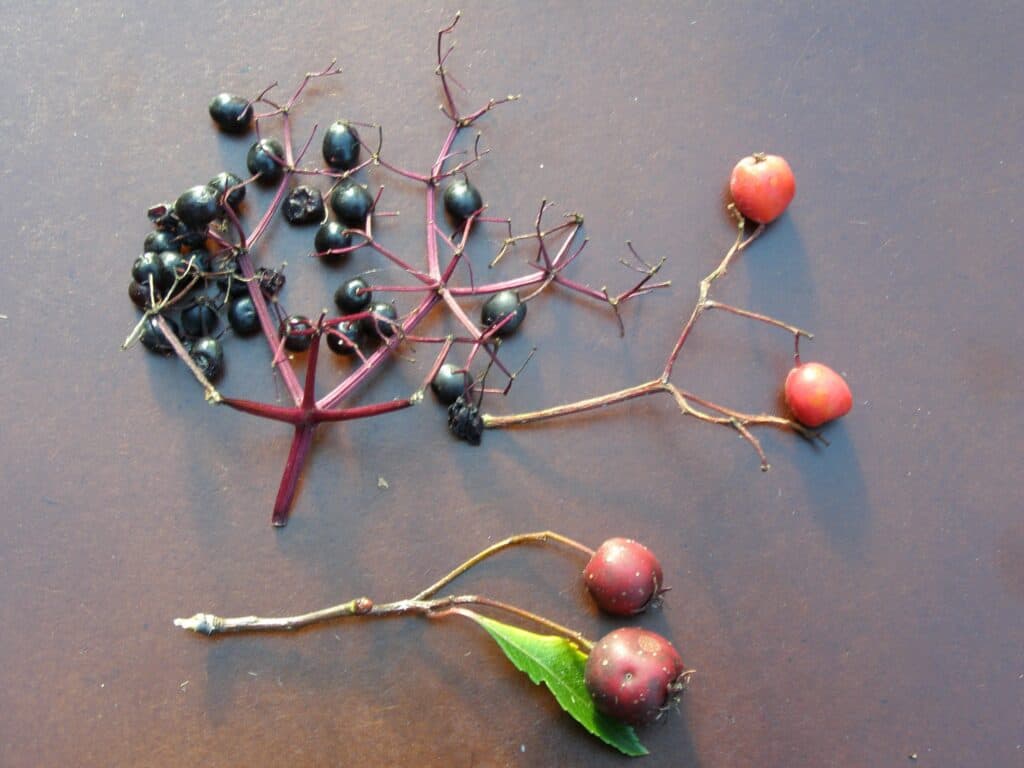Peterborough Examiner – October 15, 2021 – by Drew Monkman
Seeds ride air, animals, and their own steam to new destinations
Nature is never at rest. Even now, as leaves change colour and fall to the ground, all manner of trees, shrubs, and flowers are engaged in a crucial mission: spreading their genes via seed dispersal. This is the mechanism by which seeds travel to new locations for germination and the establishment of new individuals.
The main challenge for a seed is to get far enough away from the parent plant to have the necessary resources to grow. Try to imagine the difficulties a tiny seedling would face if it had to compete with the much larger parent plant for sunlight, nutrients, water, and space. Since adult plants have no choice but to remain rooted where they are, the seeds must do the moving.
Air dispersal
Evolution has been extremely resourceful when it comes to moving seeds around. Most seeds have evolved to travel either by wind, by mechanical bursting, or by getting a ride with some animal. Let’s look at wind dispersal first. The main challenge here is to keep the seed airborne long enough to travel as far as possible. In order to do so, some seeds have evolved an elevated, umbrella-like crown of intricately-branched hairs. This structure could be compared to a parachute. When a light gust of wind catches the hairs, it raises and propels the seed into the air. This technique can be so successful that seeds sometimes blow across entire mountain ranges.

Right now, milkweeds and goldenrods are spreading their genes using this method. The fall winds tug on the silky hairs and, one by one, they are carried aloft. Sometimes you can see the seeds departing one after the other like paratroopers jumping from a plane in military precision. Poplars, aspens, and willows also use this method. In late spring, their cottony fluff can resemble newly fallen snow as it collects on the ground.
A common alternative to packing a parachute can be found in seeds that possess a rigid or membranous, wing-like appendage. Common examples are the single, twirling blade of ashes and basswoods and the double rotors of maples. The wing typically has a slight pitch or asymmetrical profile – similar to the blade of a fan or propeller – which forces the air to flow faster over one side than the other. This causes the seed to spin in helicopter-like fashion as it falls. At the same time, a small amount of lift is created. Depending on the speed of the wind, the lift allows the seed to travel considerable distances.
A similar dispersal method is found in a group called gliders. In elms, for example, the seeds are completely surrounded by a thin, papery margin that enables them to twirl and glide through the air like a frisbee. In the case of spruce, hemlock, fir, and pine, there’s simply a small, wing-like blade attached to the seed which extends the travel distance.
Finally, a small number of plants disperse their seeds via mechanical methods. This can take the form of an explosion when a ripe seed suddenly bursts out. In different ways, seed pods can build up tension internally. This provides the force to shoot the seeds impressive distances. In jewelweed, for example, pressure develops in the fruit wall and the slightest touch sends the seeds flying – hence the common name of touch-me-not.

Dispersal by animals
Birds, mammals and even insects are also important agents of seed dispersal. In late summer and fall, they seek out seeds – often in the form of fruit or nuts – as a source of food. However, you might wonder how the seeds they devour could ever survive being eaten? As it turns out, the digestive process only breaks down the nutritious and fleshy mesocarp – the edible portion of a fruit. The seed or seeds within usually pass through the animal’s gastrointestinal tract unharmed. In fact, the journey through the gut has an unexpected bonus: the seed can end up being deposited right in the middle of a pile of mineral-rich poop.
Seeds that are ingested by birds may be regurgitated or defecated. Cedar waxwings, for example, usually defecate all of the seeds they eat. Smaller birds such as vireos mostly regurgitate, while robins do both. Seeds that are defecated spend more time within the bird and therefore have a better chance of being deposited further away.
Mammals such as squirrels also inadvertently disperse seeds when they bury nuts like acorns and walnuts in the ground for later consumption. Not all of the nuts are recovered, however, since a squirrel will often cache more than it needs. The nuts that are left uneaten will therefore have a good chance to germinate. Squirrels use a technique known as “scatter hoarding” which describes their habit of hiding food in multiple locations within their territory.
Insects such as ants also bury seeds. The seeds of many spring wildflowers like trilliums and violets have edible outgrowths called elaiosomes. The ants grab the seeds by these whitish, oily appendages and carry them back to their nests where these nutritious structures are eaten. The seeds themselves are not consumed but remain underground where some may eventually germinate. Elaiosomes have no known function other than to attract ants.
There is yet another way in which animals can inadvertently spread a plant’s genes. Some seeds have evolved to “hitchhike” by attaching themselves to the animal’s fur with barbs and hooks. The seeds of beggar’s tick (barbs) and burdock (Velcro-like hooks) are common hitchhikers. Seeds can also hitch a ride in the mud encrusted on shoe soles or even in tire treads. This is one reason that new species to an area often appear first along roadsides.

Co-evolution
The reciprocal adaptations of plants and their seed dispersers is an excellent example of co-evolution, namely changes in organisms as a result of their interactions with each other. The decisions of countless generations of birds – animals with keen eyesight – have favored the evolution of conspicuously colored, energy-rich fruits to attract seed-dispersing birds. A good example is cherry trees. However, in species like oak and beech which have coevolved with mammals –animals which rely more on odors – the fruits tend to be dull-colored but rich in smell.
Plants whose seeds are dispersed by birds have often evolved fruits with large seeds covered by a thin but nutritious layer of flesh. The bird is therefore forced to swallow the fruit whole, since it is impossible to simply remove the flesh. In response, many fruit-eating birds have evolved bills with wide gapes, so they can swallow the fruit whole.

Nature has been prolific in fashioning all of these different but wonderful contrivances for dispersing seeds. But, as is always the way with evolution, there is no master plan or grand design. It simply comes down to whatever works.
CLIMATE CHAOS UPDATE
On November 1, only 17 days from now, COP26 will begin in Glasgow. This climate summit of the world’s nations may be the last opportunity to coordinate the required global action to avoid the worst impacts of climate change.
ALARM: Nearly six in 10 young people, aged 16 to 25, are very or extremely worried about the climate crisis. This was a key finding of the biggest scientific study yet on climate anxiety and young people, published on Sept. 14. A similar number said governments were not protecting them, the planet, or future generations, and felt betrayed by the older generation and governments. Four in 10 are also hesitant to have children. Earlier this month, UNICEF found that 1 billion children around the world are at “extreme risk” from the impacts of climate breakdown. To read more, go to https://tinyurl.com/4984tn96
HOPE: Canada’s largest single-profession pension plan plans to slash the carbon emissions intensity of its investments by 45% by 2025 and by two-thirds by 2030 from its 2019 baseline. See https://tinyurl.com/ncjchn54
EVENTS: On Nov. 8, at 7 pm, I will be speaking at 4RG Meets about how climate change is affecting nature in the Kawarthas. 4RG Meets are monthly meetings for anyone seeking an understanding and effective response to the climate crisis. Each meet consists of a 25 minute presentation followed by a question period. Email 4RGmeets@gmail.com for a Zoom link.
TAKE ACTION: To see a list of ways YOU can take climate action, go to https://forourgrandchildren.ca/. Click on “This Month’s Action” or “Find Another Action for Today.”